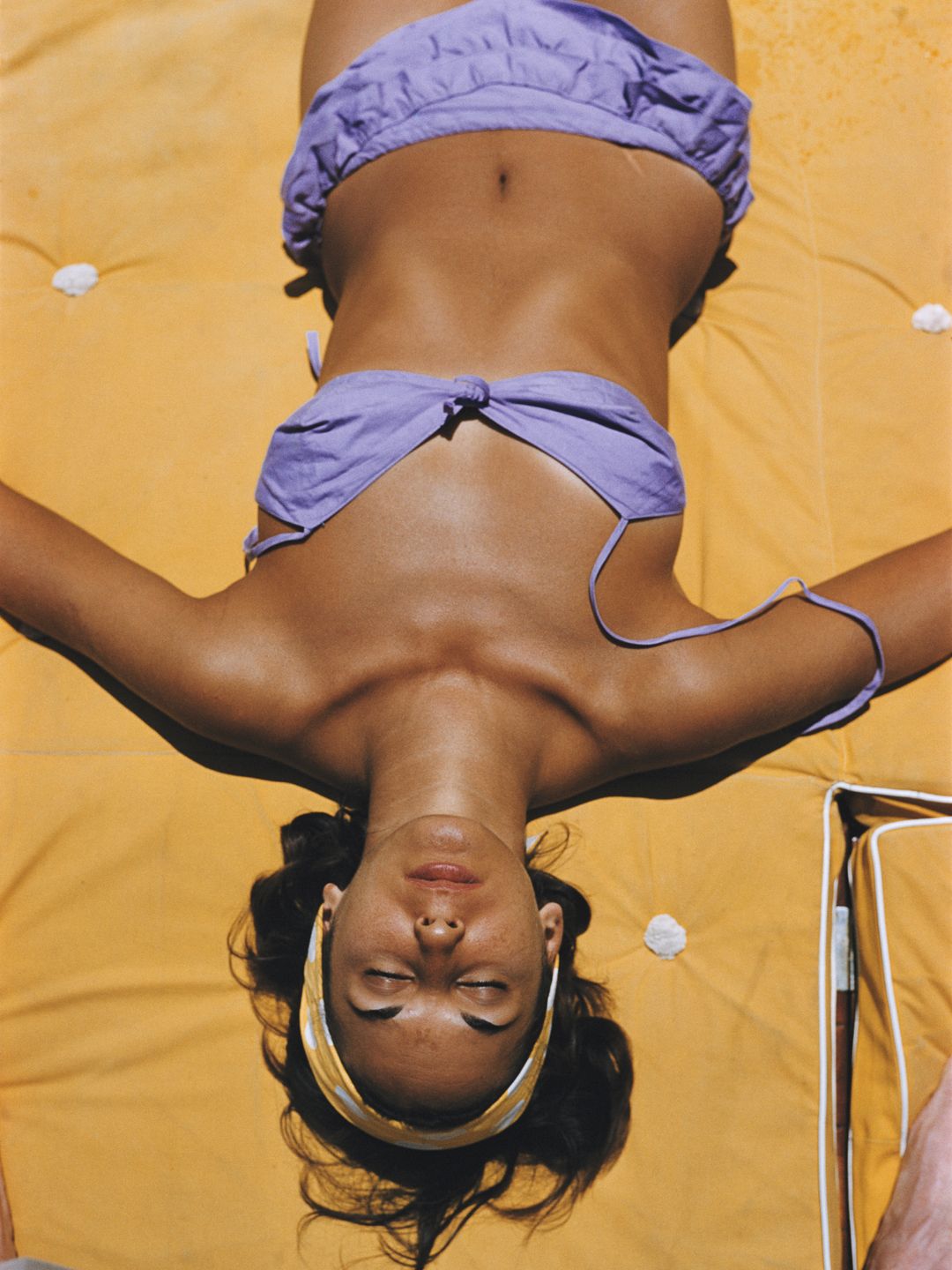Granted, the UK consistently falls short in the sun department. That much, there's no denying. In a way, it's perfectly understandable that many of us are seeking a bronzy glow by other means.
Self-tanning formulas have come on leaps and bounds in recent years – biscuity wafts and stained sheets are a thing of the past.
But many are searching for a more permanent way to get tanned skin, with #sunbed having amassed a whopping 572.4m views on TikTok.
It can't come as much of a surprise that sunbeds are categorically damaging. From skin cancer campaign deterrents to dermatologists speaking out against the dangers, the sunbed sesh is the persona non grata of the beauty treatment line-up. Right?
READ: Body makeup for party-ready radiant skin
Recent search interest and stealthy sunbed usage by some beauty industry professionals would suggest otherwise. Concerning, to say the least.
How do sunbeds work?
Sunbeds are fitted with tanning lamps that work by exposing the skin to ultraviolet radiation (both UVA and UVB, although mostly UVA). These rays stimulate melanin production, a process that your skin undergoes in effort to protect itself against damage, resulting in a tan.
It is similar to what happens when your skin is exposed to the sun, only the rays are very highly concentrated, especially at such close range.
According to Dr Sophie Shotter, award-winning aesthetic doctor and founder of Illuminate Skin Clinics, the estimated UV index of the average sunbed is 12 – equal in intensity to the level of radiation emitted by the sun at the equator at midday.
Are sunbeds safe?
Sunbeds are extremely dangerous for everyone, but some people, as outlined by Cancer Research, are more at risk than others. Including, but not limited to, those with: fair skin, lots of moles or freckles, a history of sunburn, skin that burns easily or a personal history of skin cancer.
Young people in particular are vulnerable – those who are frequently exposed to UV rays before the age of 25 are at a greater risk of developing skin cancer later in life. This is reflected in the law - here in the UK it is illegal for people under the age of 18 to use sunbeds.
READ: The fake tan mistake we're all making, according to St. Tropez's tanning expert
MORE: Best cream blushes for a fresh, healthy flush – tried & tested
"A single sunbed session can increase your risk of developing squamous cell carcinoma by 67% and basal cell carcinoma by 29%," Dr Shotter warns. "Even just one sunbed session before the age of 35 can increase your lifetime risk of melanoma skin cancer by 75%."
The mix of radiation emitted from tanning lamps differs from that which is produced by natural sunlight – most sunbeds produce significantly more UVA than UVB. "Some sunbeds produce 99% UVA," Dr Shotter says. "This is the type of radiation responsible for causing DNA damage, skin cancer and premature ageing."
Do sunbeds cause premature ageing?
All UV exposure exacerbates the skin's ageing process, triggering the formation of free radicals, but sunbeds are particularly harmful. UV radiation increases the expression of matrix metalloproteinases which are "responsible for breaking down the skin’s crucial structural proteins".
"This breakdown of the collagen and elastin in the skin lead to a rough skin texture, skin laxity and formation of wrinkles. The overstimulation of the skin’s melanocyte cells also leads to pigmentation formation and an uneven skin tone."
Essentially, if you're using sunbeds to give your skin a youthful glow, you're totally barking up the wrong tree.
Is it true that priming your skin before going on holiday will make it burn less easily?
Some argue that sunbeds are a useful way of boosting your vitamin D levels, but skin experts are quick to debunk this myth. "Vitamin D production is stimulated by UVB radiation, which is very low generally in sunbeds," Dr Shotter points out.
In fact, she would never advocate 'pre-tanning' your skin before a holiday. "You can prime your skin by taking supplements to boost its ability to protect itself, but you can still burn, and studies have shown that those who use sunbeds before a holiday are actually more likely to burn once they're away. The only way to protect from sunburn is with effective sunscreens and sun avoidance at peak times of day."
Can sunbeds help with certain skin conditions?
Let's be clear – UV radiation can be an effective treatment for various skin conditions, psoriasis for instance. But the type needed is UVB, which, again, is very low in most sunbeds. "I would always recommend having this done professionally under the care of a dermatologist with a device used for this purpose," Dr Shotter says.
"Acne is another condition that some people find improves with sun exposure. This is because the UV rays have an anti-inflammatory effect. However, it's still important to wear a good sunblock, even if you have acne."
Time to whip out the tanning mitt and put our flexibility to the test. Fake it 'til you make it, right?


